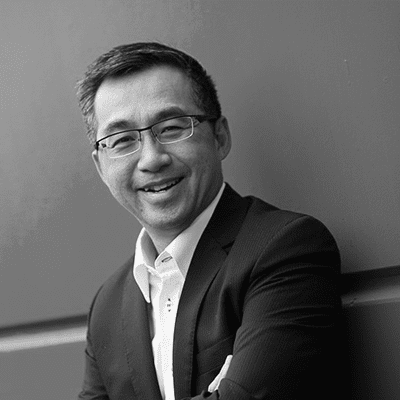This week, Tara Neal, Executive Editor at The Fast Mode spoke to Dennis Wong, VP 5G Enterprise & Cloud on Singtel's 5G journey and how the operator's initiatives are powering industries and digital economies in the region.
 Dennis Wong, VP 5G Enterprise & Cloud, Singtel
Dennis Wong, VP 5G Enterprise & Cloud, SingtelTara: How is Singapore’s Smart Nation vision fuelling the adoption of 5G in Singapore, and how will this impact the 5G momentum in the region?
Dennis: Singapore’s Smart Nation vision with 5G
Singapore’s Smart Nation vision is about harnessing technology to effect transformation in health, transport, urban living, government services and businesses. Singtel’s strong and secure 5G infrastructure as well as deep expertise in Industry 4.0 technologies are helping to transform these sectors in Singapore and the region for both businesses and consumers.
From ramping up 5G SA deployment across the country and enabling digital technologies such as the Internet-of-Things (IoT), analytics, artificial intelligence, and robotics, to creating next-generation manufacturing solutions that can improve operational efficiency and future-proof industries, Singtel has been working on numerous initiatives with various partners to strengthen Singapore’s position as a leading industrial innovation hub.
Our 5G journey
To develop Singapore’s 5G ecosystem and drive adoption by enterprises, we rolled out Singapore’s first live 5G facility, 5G Garage, at Singapore Polytechnic in January 2019 to serve as a training centre, test bed and ideation lab. To date, we have successfully developed more than 20 5G use cases in areas such as robotics, virtual reality, artificial intelligence and drones.
Last year, together with the Government Technology Agency (GovTech) and the Sentosa Development Corporation (SDC), we launched the 5G@Sentosa testbed to host public sector 5G use case trials to benefit the built environment, transport, and tourism industries. Singtel plays an important role with its purpose-built network and edge cloud infrastructure in Sentosa supporting the rollout of 5G applications on a mass scale, while Sentosa provides a unique environment as an ecosystem of leisure experiences and businesses for organisations to study and trial the viability of innovative prototypes and solutions. Some of these trials involve fully autonomous robots and drones that track and inspect sites remotely, tele-operating autonomous vehicles for cleaning roads and infrastructure-light 5G leisure experiences for visitors to the island. Around 15 live trials are slated to be running by the end of this year and 30 by the middle of 2023.
Working closely with many enterprises gave us insights into some of the challenges they were facing in trying to adopt 5G. One of which was navigating the complexity and resources required. To make it easier for enterprises to adopt 5G to meet their business transformation and innovation ambitions, we launched Singtel’s Paragon, an all-in-one orchestration platform in February this year. The one-stop platform significantly reduces the complexity and time needed – lowering the barriers to entry for enterprises, enabling faster deployment of use cases while removing considerable operational and cost overheads. With Paragon, enterprises can improve their existing services, develop innovative solutions and accelerate their digital transformation unlocking a world of opportunities.
One such enterprise use case is Micron Technology. We have partnered Micron to deploy our 5G millimetre wave (mmWave) solutions with localised edge core at the semiconductor manufacturer’s 3D NAND flash memory fabrication plant in Singapore. Micron is the first company in Singapore piloting 5G by deploying an mmWave campus solution with edge core on-premises for industry 4.0 manufacturing applications. The industry-first deployment proves that 5G networks can be used for high-precision quality control and manufacturing operations and serves as a case study to inspire other 5G-enabled manufacturing sites around the world.
Singtel 5G solutions in the region
We will also be deploying our 5G solutions at Hyundai Motor Group’s state-of-the-art Innovation Centre in Singapore. With innovation from Hyundai and enablement from our 5G solutions, we are looking at a new concept of manufacturing where the station comes to the cell, unlocking opportunities for hyper-customization and other novel applications. Together, we are paving the way for Singapore to be the centre for Smart Manufacturing in the region.
Singtel’s 5G solutions are also being exported to Optus in Australia and AIS in Thailand, driving adoption, innovation and use case development among enterprises, thus strengthening their competitive advantage and growth in these markets and in the region.
By complementing the government’s Smart Nation efforts, we are empowering manufacturers and industry players with a robust and versatile launch-pad, allowing them to leverage digital technologies to create next-generation solutions and paving the way for Singapore to be the 5G centre of excellence for the region.
Tara: What are the key industry verticals that are expected to be among the first and the biggest adopters of 5G? Can you share with us Singtel’s suite of services for these verticals?
Dennis: The increasing use of technology to work, play, and stay connected led by the pandemic have shaped new digital habits, driving enterprises to recognise 5G as an enabler of business transformation, innovation and success. Specifically, we’re seeing industry verticals such as Industry 4.0; future skills and edutech (e-learning); smart transportation; as well as urban planning and virtual tourism; as early adopters of 5G.
Singtel’s 5G solutions cater to industry needs such as video or computer vision analytics, drones, auto-guided X, content delivery and caching and are powered by our Paragon, MEC, and AI & Data Analytics platforms. We continue to onboard more use cases and partners onto our platforms.
Further information about our solutions:
Tara: Open architectures and systems (e.g. Open RAN) are expected to be another key contributor to the rapid growth of 5G. What is Singtel’s approach to openness?
Dennis: OpenRAN when commercially adopted can be beneficial to telcos to gain more granular control on radio technology and also contribute to the cost efficiency of operating telco networks. However, OpenRAN standards are still actively evolving globally. Singtel is keenly monitoring the evolution of the market and are also embarking on trials with strategic partners to learn and explore the feasibility of adoption of new technologies like OpenRAN.
Tara: Private 5G networks are another major focus area for operators. How is Singtel supporting the development of private 5G networks?
Dennis: As a licensed mobile network operator, Singtel owns the spectrum, authentication and control of our private 5G networks, or campus or on-premises networks, as we refer to them.
We have a few active trials involving private 5G networks and on-prem MEC currently underway with key strategic customers, aimed at developing use cases that solve their operational challenges and showcase the benefits of low latency and high throughput. An example of such a trial is with Micron, whom we have recently partnered to deploy an mmWave campus solution with edge core on-premises for Industry 4.0 manufacturing applications – a first in Singapore and for the semiconductor manufacturing sector.
Tara: With Cloud becoming a preferred model for operating and managing 5G networks, how equipped are operators in the region to move their traditional workloads to the Cloud? How is Singtel leading the way in this aspect?
Dennis: Several years ago, the introduction of network function virtualisation (NFV) was among the first few attempts by the industry to decouple the function of networks from the infrastructure. The aim of this was to achieve the scalability and agility needed by operators in the face of rapidly evolving technology. The advent of 5G has accelerated the adoption of NFV with vendors adopting cloud native designs in network functions.
A cloudified 5G network offers three key benefits – it raises scalability which enables 5G use cases to be rolled out faster, increases the capabilities of a virtualised device as its capabilities are no longer restricted to a mere physical device and ensures a more resilient network as capabilities extend beyond a single location.
However, it requires a mindset shift to managing end-to-end accountability, network and process management, as well as upskilling of the workforce to manage the scale and complexities of the cloud which were not present prior.
Over the past eight years, Singtel has been on a journey to virtualise our networks, adopting best practices from other operators as well as developing our own designs and roadmaps to improve our cloudification journey while working closely with our strategic partners and vendors to ensure that their roadmaps are aligned in terms of being cloud native.
We are optimistic that more operators will join us on this journey to fast-track the transformation of the cloudification industry.
Tara: What do the next 12 months bode for the telecoms industry?
Dennis: Digital economies will continue to experience a global growth spurt coupled with growing dependence on telecommunications as a platform. Singtel stands ready to capitalise on technology proliferation and large-scale digitalisation.
We will continue to focus on capturing untapped digital growth in 5G to stimulate new growth areas and reinvigorate our core business with the host of emerging technologies 5G enables. Besides building out our 5G network infrastructure, we are also looking at how we can reorganise our business to better fund, improve and grow our digital infrastructure and deliver the demand for 5G and cloud across the region.
We have further growth plans for Paragon and are planning to regionalise the platform with other telcos, as we have done with in Australia and Thailand.
Singtel will continue to deliver Singapore’s fastest 5G network and work collaboratively with various partners to create new use cases and services to take consumers and enterprises into a 5G future together.
Charting Singtel Group Enterprise’s new growth engines, Dennis leads the strategy, development and the management of product and platform for 5G and Cloud. Prior to Singtel, Dennis was the Managing Director of Networks and Chief Technology Officer for Optus, a fully Singtel-owned subsidiary in Australia. Under his leadership, Dennis led numerous pivotal projects and launched several world-first initiatives in 4G and 5G technologies, bringing about Optus as one of the top quartile performers in the industry. Dennis received a double MBA from Management of Technology from Waseda University (Japan) and Nanyang Business School (NBS-NTU). He also holds a B.Eng (EEE) from Nanyang Technological University (NTU).



















